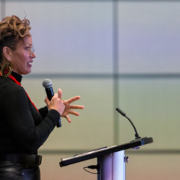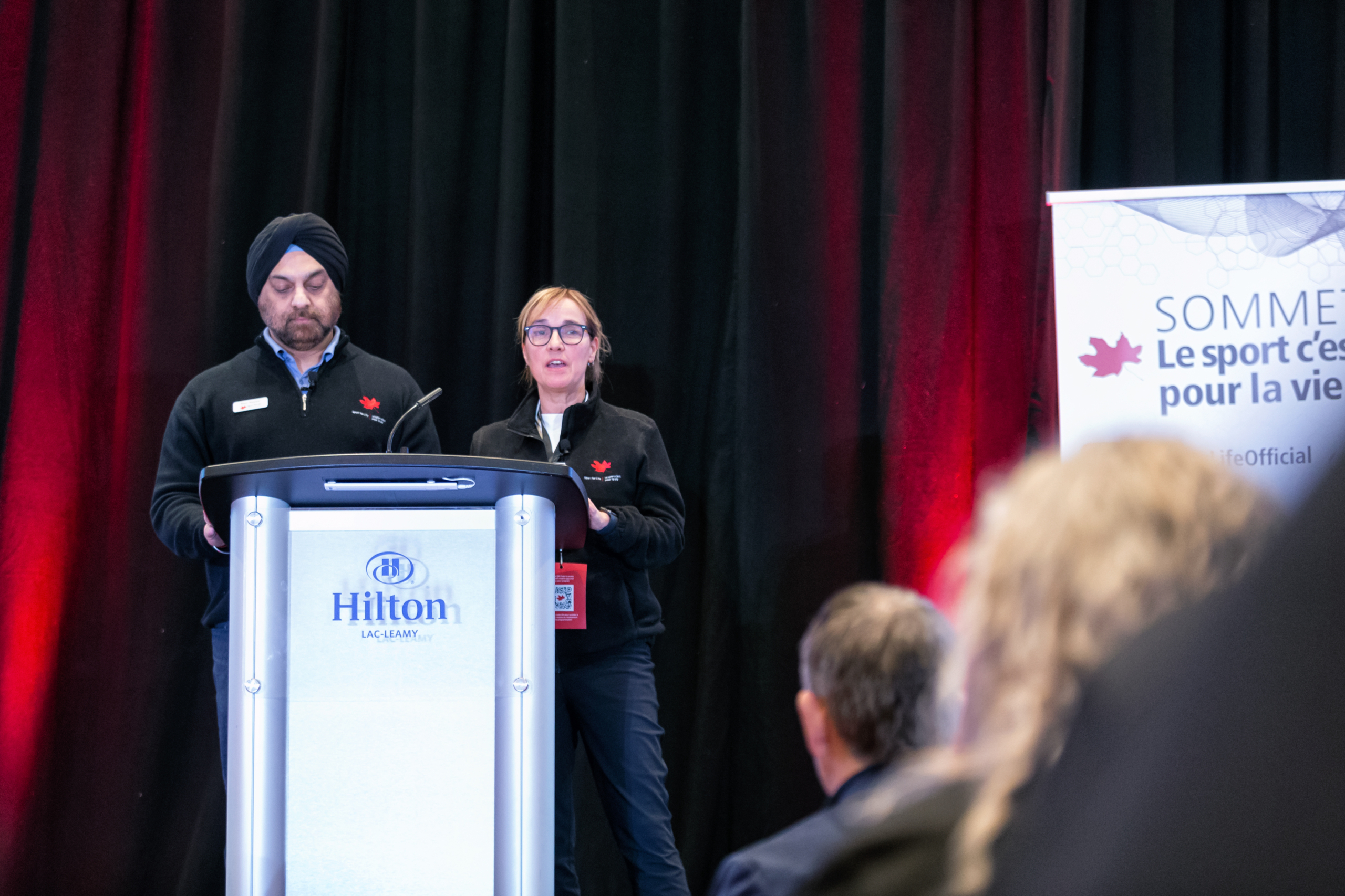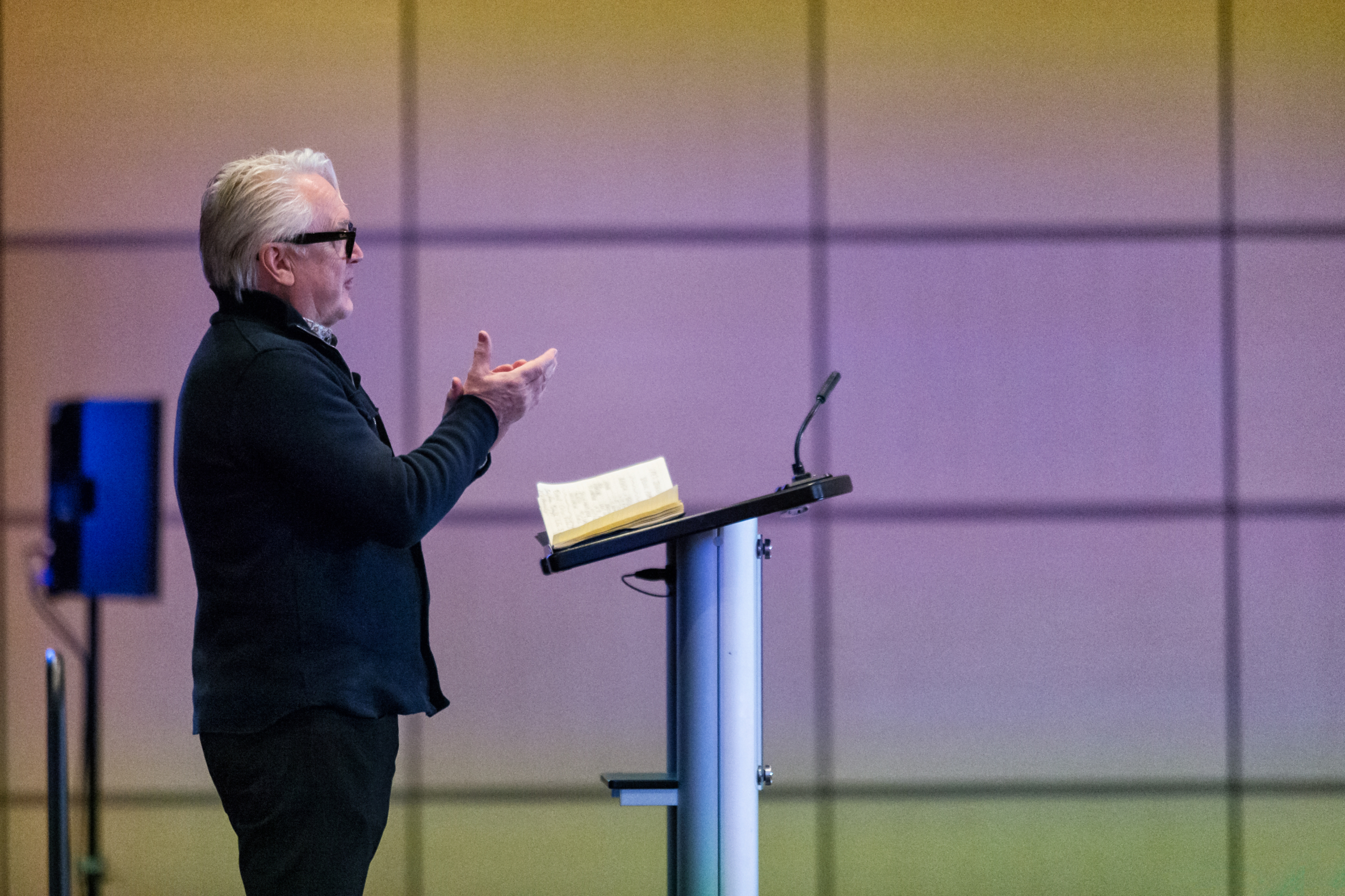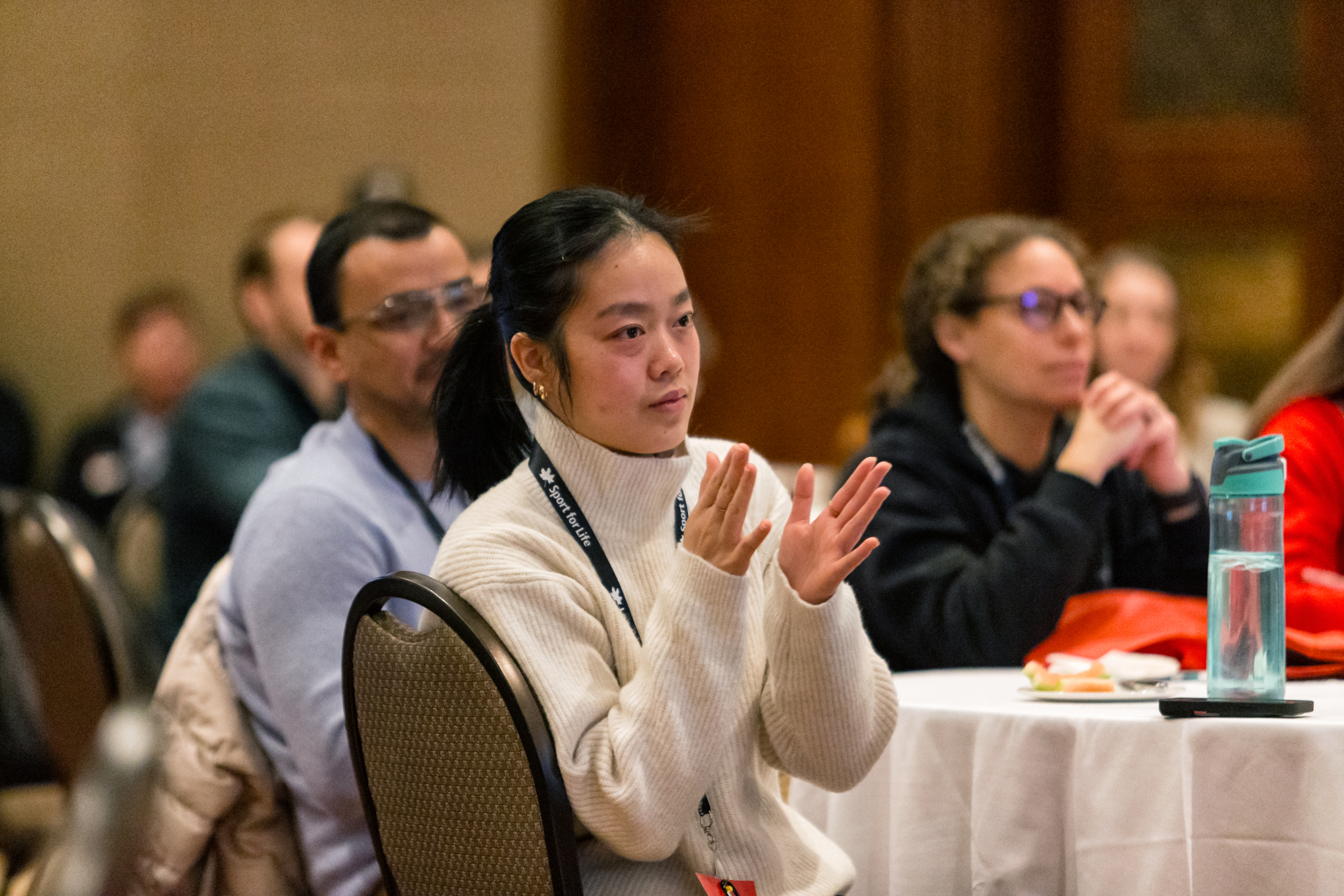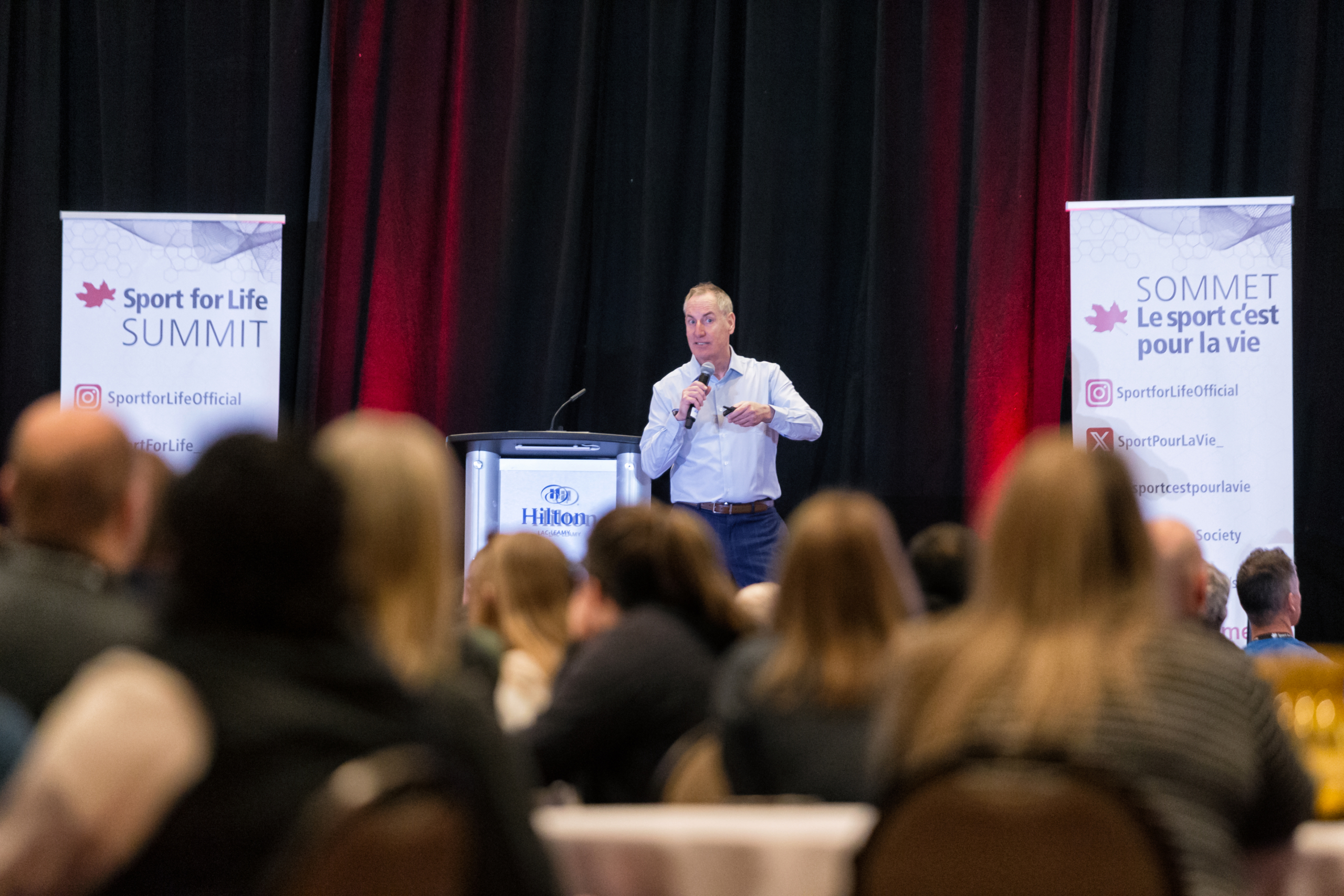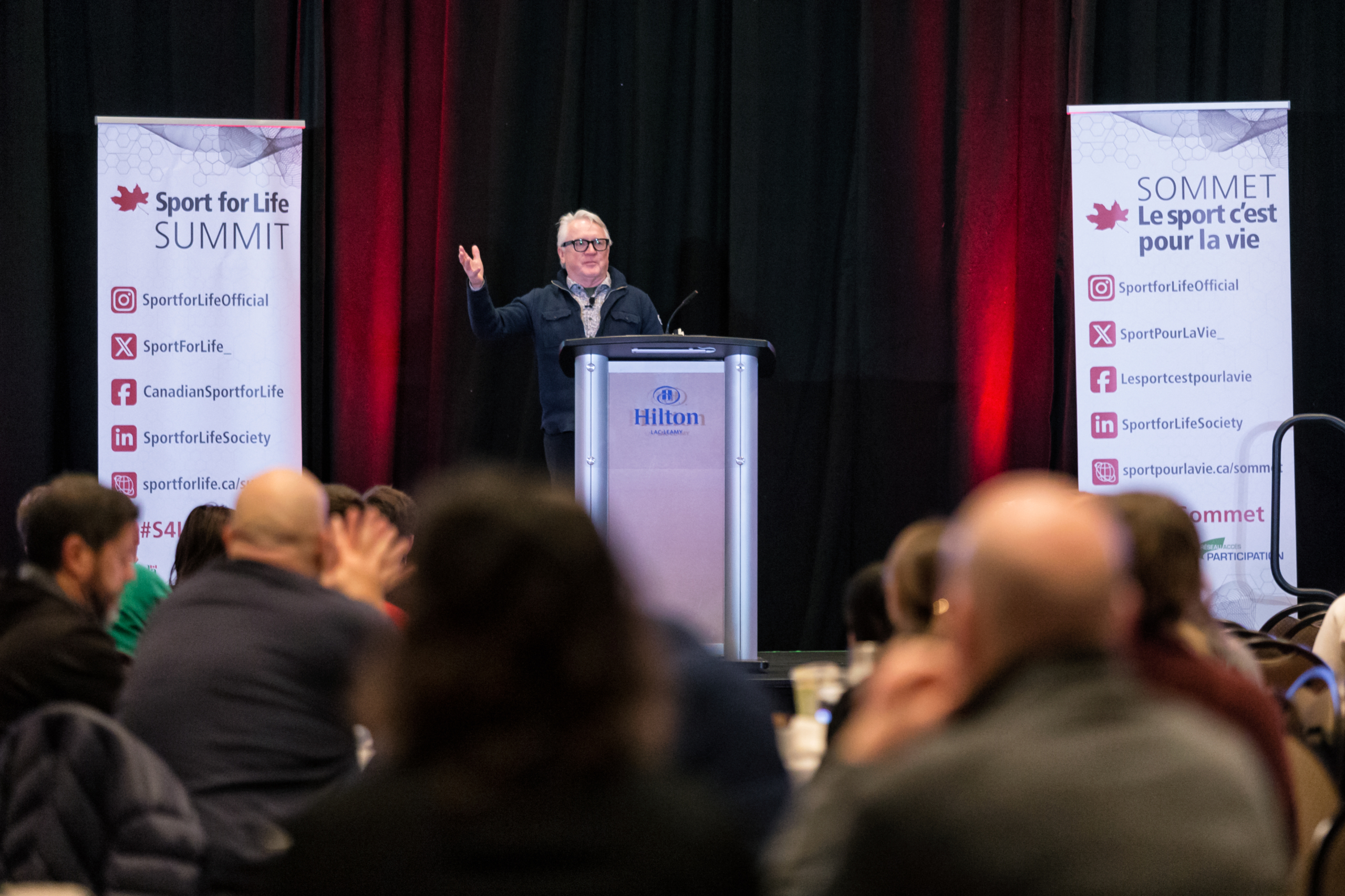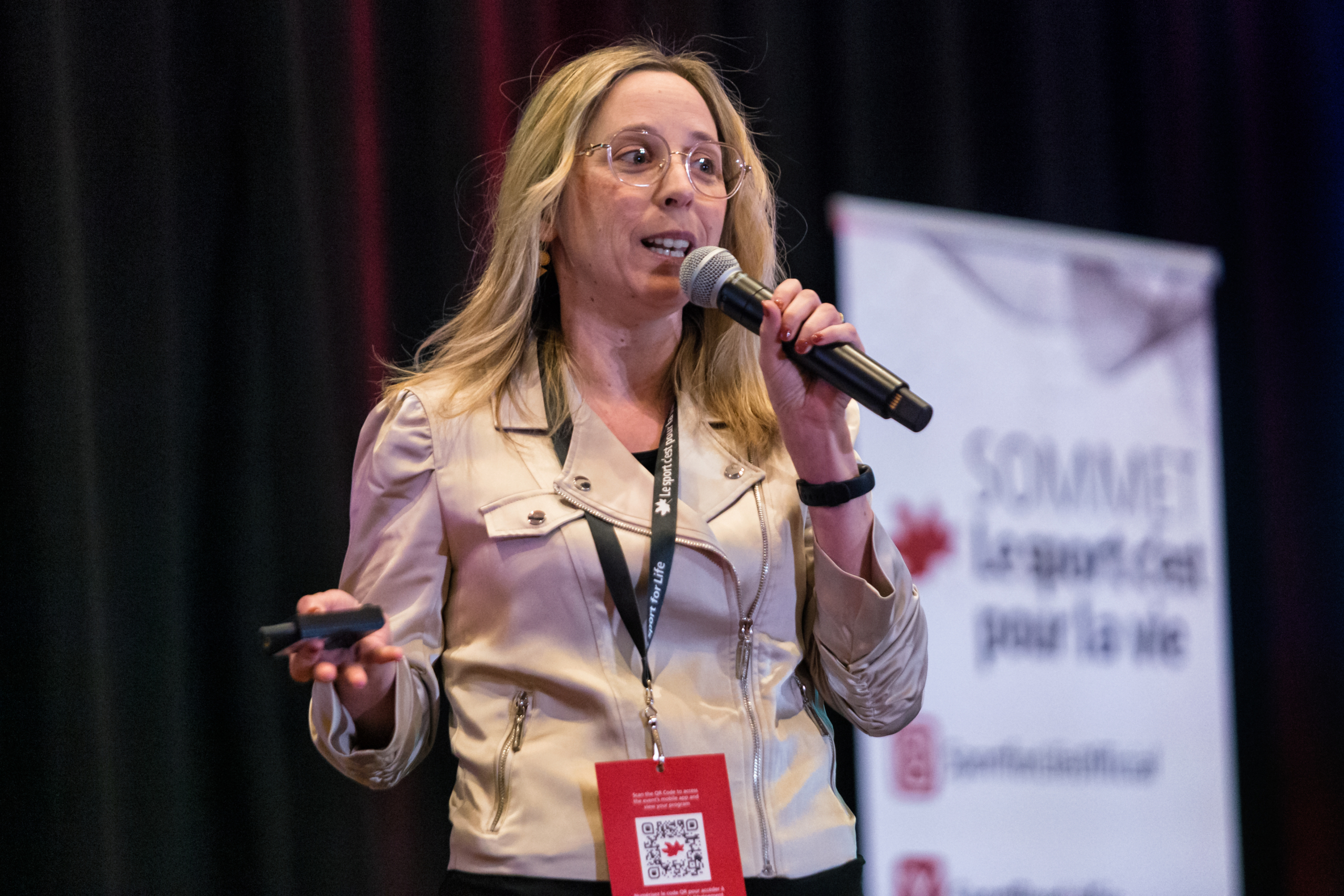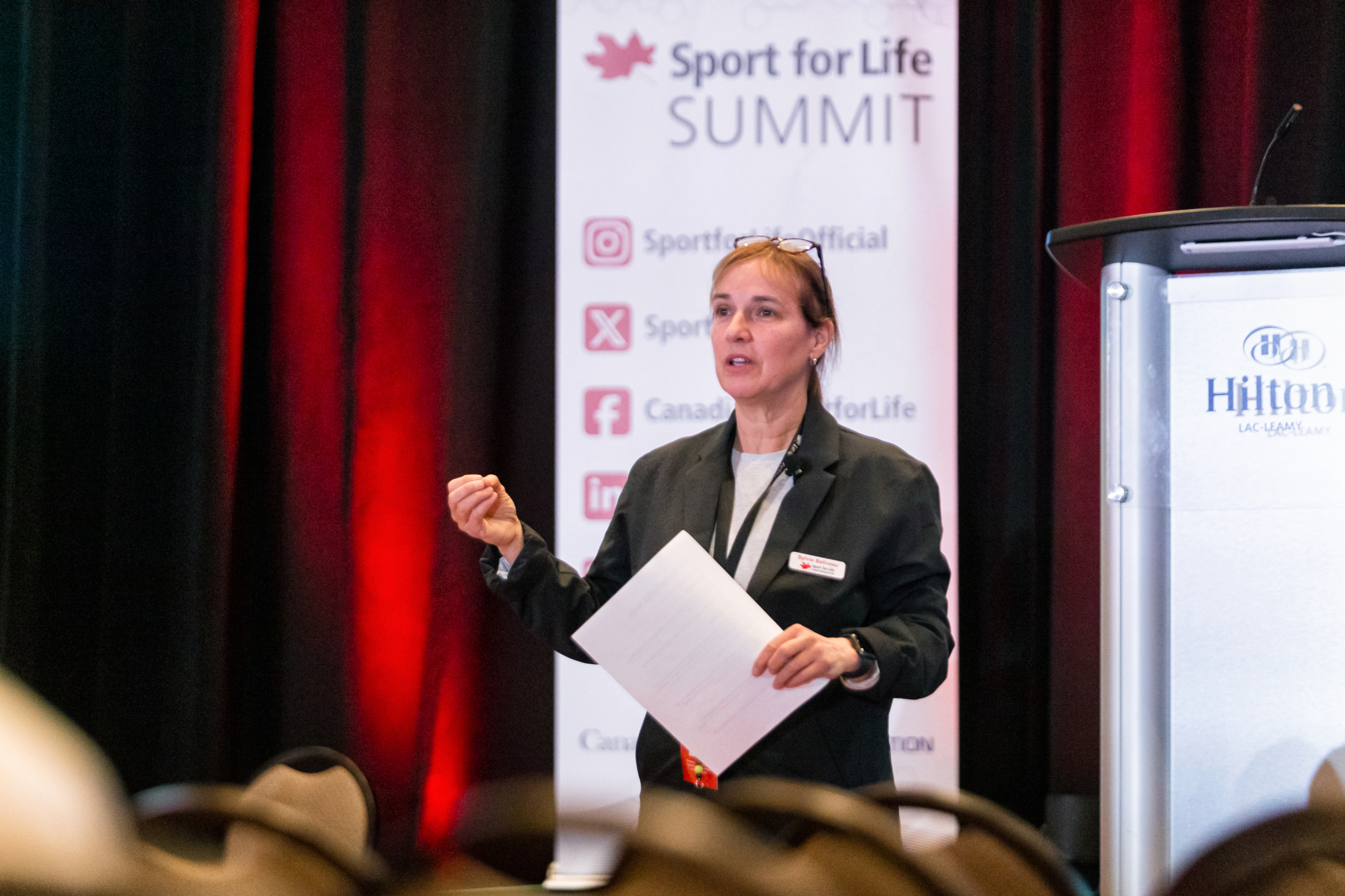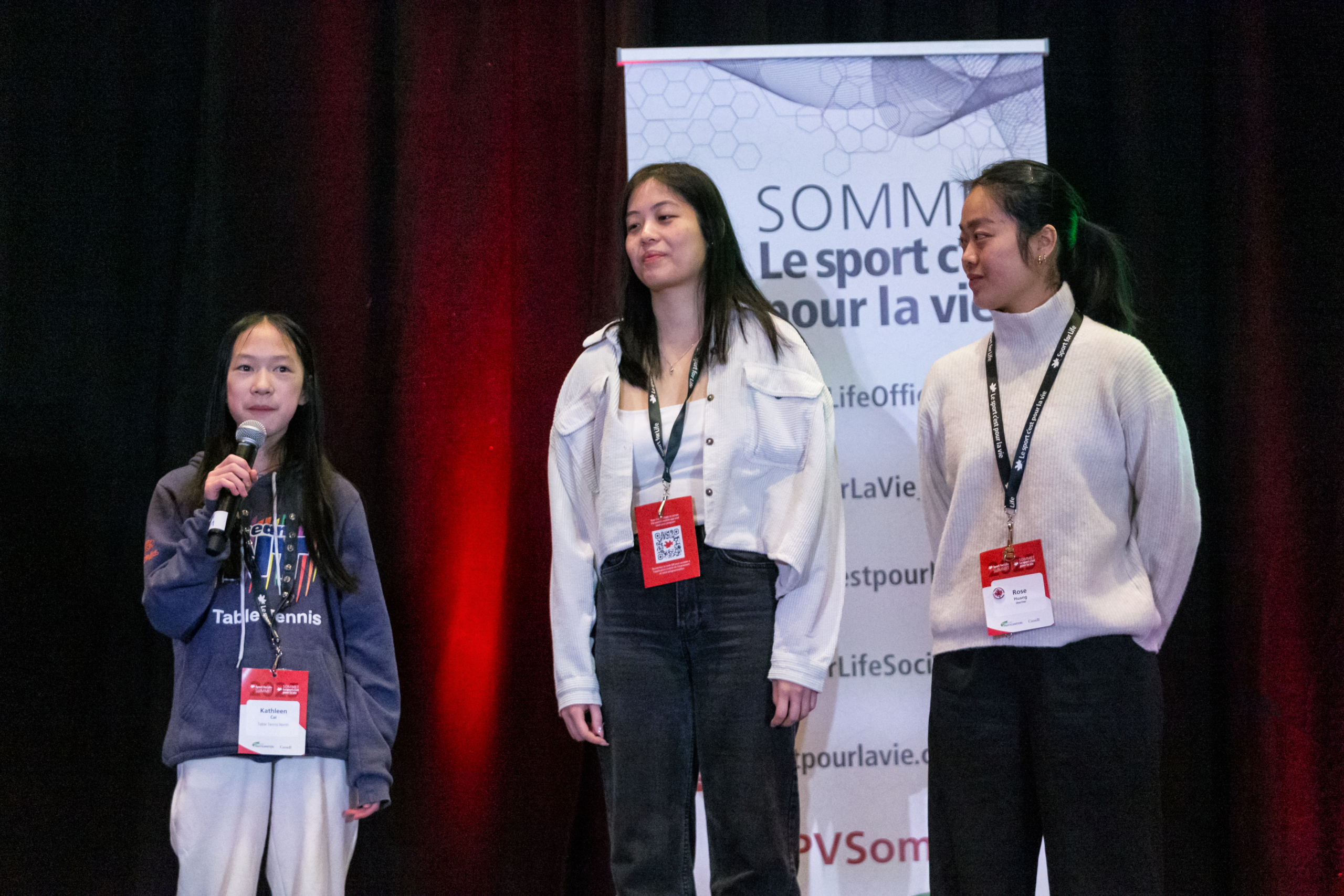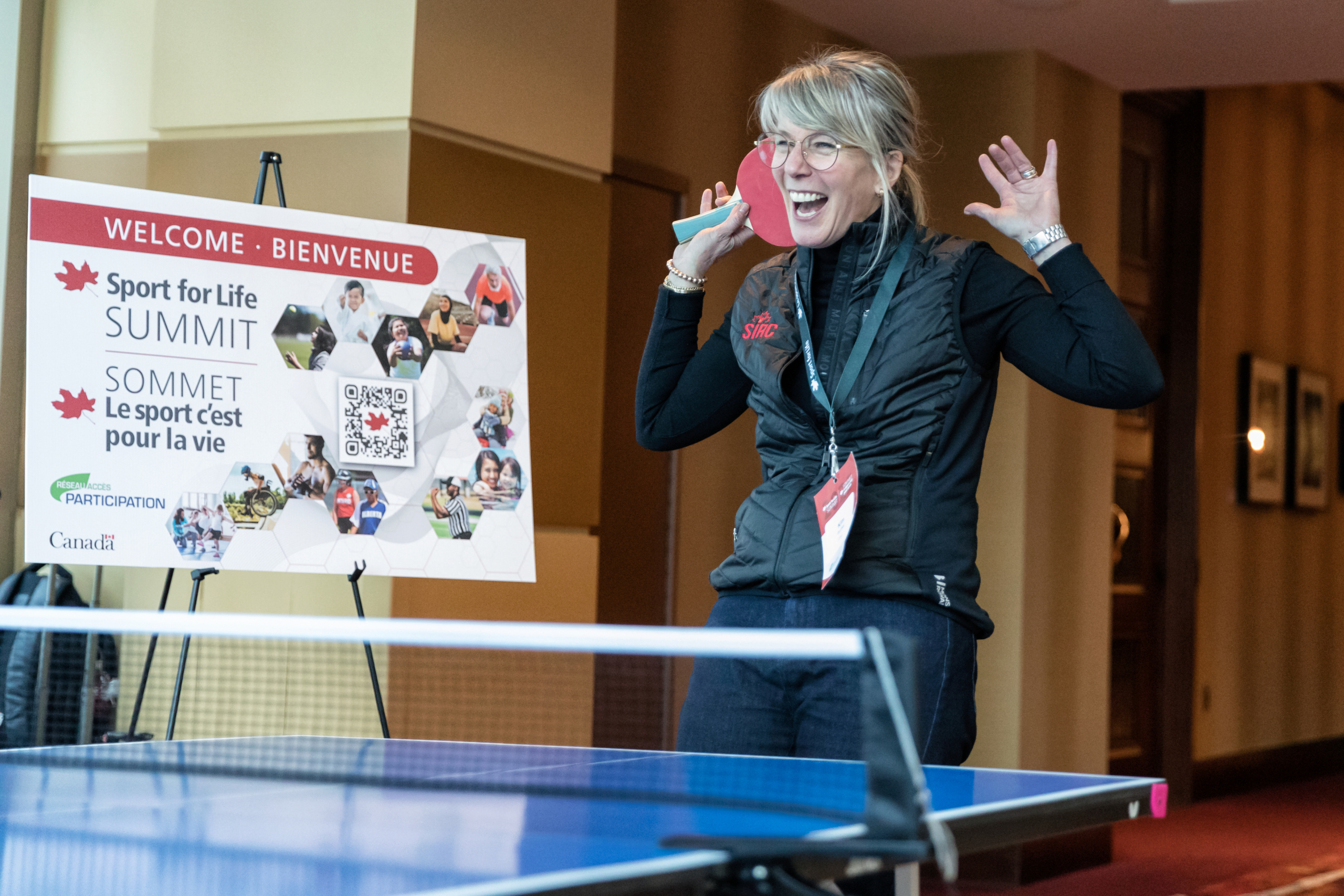Joy for Everyone: 20 Years of Transforming Canadian Sport at the 2025 Sport for Life Summit
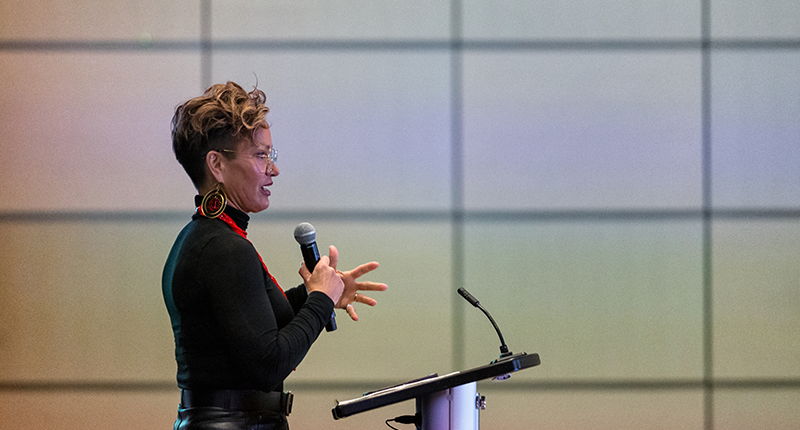
The 2025 Sport for Life Summit, held from January 21-23 at the Hilton Lac-Leamy in Gatineau, brought together more than 400 sport leaders, practitioners, researchers, educators, and advocates to explore how quality sport can be more accessible, inclusive, and joyful for all Canadians.
Under the theme “Joy for Everyone,” the three-day event marked the 20th anniversary of the Sport for Life Summit and featured a variety of presentations, interactive workshops, panel discussions, and networking opportunities centred around making sport a positive experience for participants of all backgrounds and abilities.
Two Decades of Transforming Sport in Canada
Sport for Life CEO Richard Way reflected on the organization’s journey since its founding and the evolution of the Long-Term Development (LTD) framework, which has become a cornerstone of Canadian sport policy.
“Twenty years ago, we started with a vision to transform sport in Canada, making it more accessible and enjoyable for everyone,” said Way. “Looking at where we are today, with professional women’s leagues launching in Canada and a growing focus on equity and inclusion, we can see the impact of that collective work—though there’s still much more to be done.”
The Summit paid tribute to Istvan Balyi, co-creator of the Long-Term Development framework, an influential figure in Canadian sport who recently passed away.
“Medals are a byproduct of a healthy society,” Way shared, quoting one of Balyi’s foundational principles that continues to guide Sport for Life’s mission. “Istvan always reminded us that our focus shouldn’t be solely on podium performances, but on building robust sport systems where everyone can participate. When we create an environment where physical literacy and quality sport experiences are accessible to all, high-performance achievements naturally follow. This philosophy has shaped our approach for two decades and still drives our work today.”
Championing Newcomers and Inclusive Sport
The Summit placed special emphasis on how sport can support newcomers to Canada, with the unveiling of the New to Canada Long-Term Participant Development Pathway (NLTD), a resource designed to help newcomers navigate sport opportunities, while assisting sport organizations in creating welcoming environments.
Afghan Canadian professional footballer Farkhunda Muhtaj delivered a powerful keynote address about her journey from arriving in Canada as a two-year-old refugee to becoming captain of the Afghanistan women’s national football team and now playing professionally with Calgary Wild FC in the Northern Super League.
“When I was growing up, I realized I was in a place of gratitude,” Muhtaj told the captivated audience. “I had so many resources at my disposal and endless opportunities being here in Canada. I wanted to leverage that so I could give back.”
Muhtaj shared how she used her platform as an athlete to evacuate over 300 Afghan women and girls, including members of the Afghanistan youth national team, following the Taliban’s return to power in 2021. Her work establishing Ayenda FC (meaning “future” in Persian) received a standing ovation from Summit attendees.
The New to Canada pathway was presented by Saren Blézy, Senior Project Lead with Sport for Life, who explained that “this resource is designed for both newcomers, supporting them to navigate and access sport and physical activity opportunities throughout Canada, as well as a tool for Canadian sport organizations offering effective strategies to successfully integrate newcomers into our sport system.”
Waneek Horn-Miller, an Olympian water polo player and Mohawk advocate from Kahnawake, captivated attendees with her story of resilience and advocacy in a powerful keynote address that highlighted sport’s potential as a tool for reconciliation and cultural revival.
“Sport is a microcosm of society, reflecting both its strengths and its flaws,” Horn-Miller explained during her powerful address. “When we create diverse, inclusive environments in sport, we’re modelling what’s possible for our broader society.”
Horn-Miller shared her journey from growing up in Kahnawake Mohawk Territory to becoming co-captain of Canada’s Olympic women’s water polo team at the 2000 Sydney Olympics. Her path included surviving being stabbed by a soldier during the Oka Crisis when she was just 14 years old—a traumatic experience that could have derailed her life.
“Sport was my vehicle to express myself, to band together with people, to show my pride,” she reflected. “Sport was the place that I could show that soldier who stabbed me, that all Indigenous women, we are power and we will rise.”
Horn-Miller explained how water polo provided her with a sense of belonging and purpose at a time when she was struggling with PTSD and the effects of trauma. The discipline and community aspects of the sport helped her channel her energy toward positive goals while also giving her a platform to advocate for Indigenous rights.
“Sport opened my mind to understanding people and being interested and intrigued by diversity,” Horn-Miller noted. “It taught me that diversity isn’t something to be afraid of—it’s essential for success. When you have an Olympic team, you can’t have 13 women that think the same, pray the same, and love the same, because what will happen is if one person has a bad game, it’s like a domino effect and every other player will follow.”
Her keynote emphasized the transformative potential of sport as a tool for social change, particularly for Indigenous communities seeking to reconnect with cultural practices and build stronger identities. Horn-Miller’s dual roles as both a keynote speaker and a contributor to the Urban Indigenous Sport and Recreation roundtable highlighted her ongoing commitment to expanding sport opportunities for Indigenous youth in Canada.
The Summit also featured discussions on how sport can contribute to reconciliation efforts, with Horn-Miller stressing that “we have to create environments where physical literacy and quality sport experiences are accessible to all Indigenous youth, regardless of where they live.”
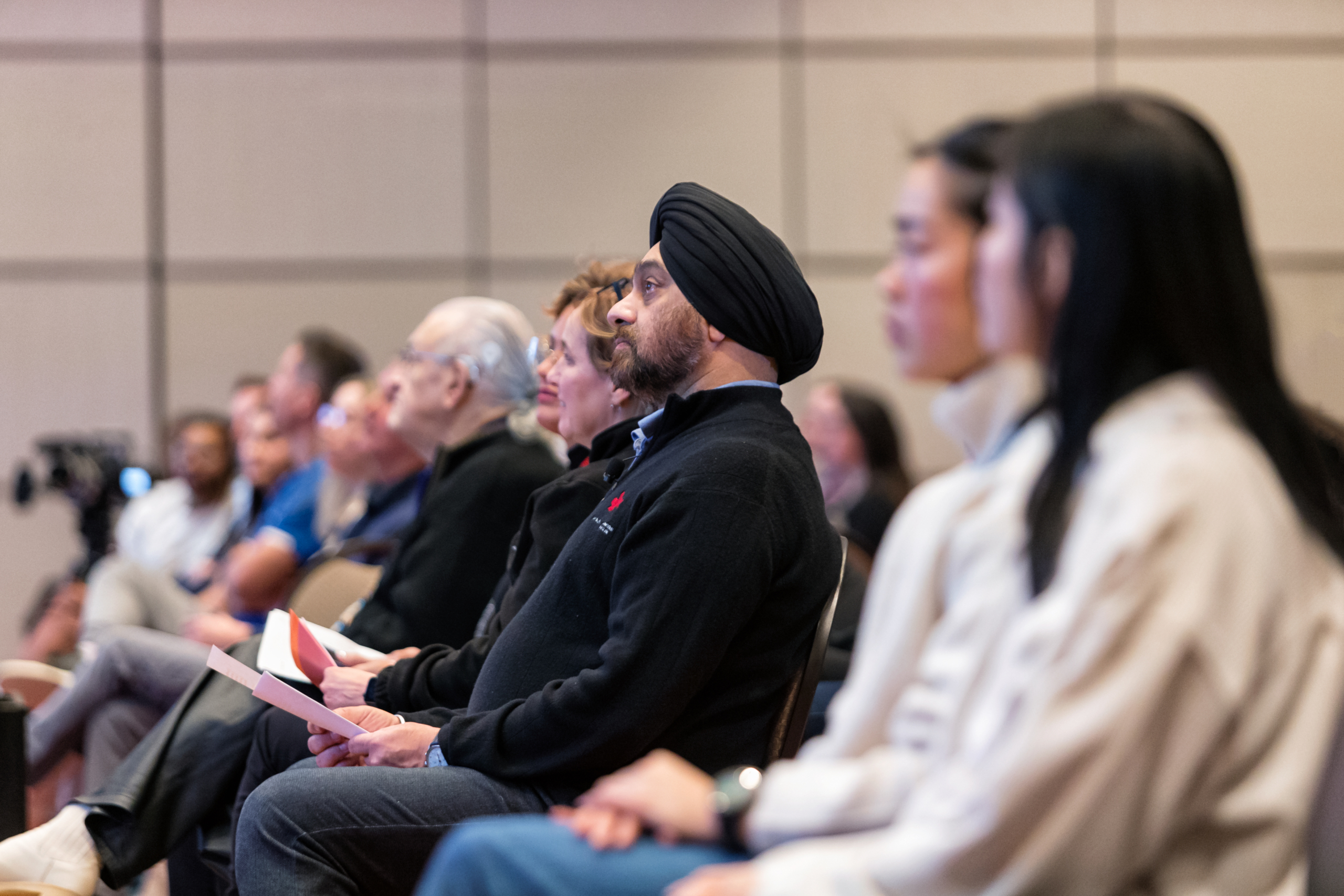
Center: Ram Nayyar
Sport as a Path to Healing
David Arsenault, founder of Champions for Life Foundation, delivered a deeply personal and moving keynote on the second day of the Summit. His presentation combined vulnerability with inspiration as he shared how sport became his pathway to healing after experiencing childhood trauma.
“I was well loved when I was young,” Arsenault began, describing a supportive family environment with his mother and two brothers. This foundation of love was shattered when, at age 12, he experienced a traumatic sexual assault during a school trip. Unable to speak about what happened, Arsenault carried this burden silently, feeling isolated and afraid.
“I can’t tell you how difficult that is,” he shared with the audience. “To start your journey in life with insurmountable challenges.” The trauma affected every aspect of his young life, from his self-confidence to his ability to trust others.
At age 14, Arsenault found taekwondo, which became his lifeline. “I found a community where I could reach the highest heights,” he explained, describing how the martial art provided both structure and belonging during a critical period in his recovery. The discipline, respect, and physical mastery involved in taekwondo gave him tools to rebuild his sense of self.
“Sport gave me that structure, and it became a place where I could put those hurt feelings and that stress,” Arsenault explained. The discipline and community of taekwondo offered him a way to channel his emotions and rebuild his confidence after trauma.
The keynote culminated with an interactive taekwondo demonstration, during which attendees broke boards—a powerful metaphor for breaking through personal barriers. Arsenault challenged participants, “What will you break through in your life? You have to know what it is.”
Today, his organization Champions for Life reaches over 80,000 children across more than 850 schools, focusing on using physical activity as a vehicle for building resilience and confidence. As Arsenault explained, his mission is to help young people develop “an indomitable spirit” in the face of life’s challenges.
Protecting the Joy in Youth Sport
Dr. Amanda Stanec, founder of Move Live Learn and co-author with Richard Way of the book Protect the Joy, delivered a passionate keynote challenging attendees to reconsider how we approach youth sport.
“Why are we treating children so differently when they’re in the classroom learning something new compared to when they’re in sport at the same age, learning something new?” Stanec asked. She pointed out that while struggling students in classrooms are often given extra time and support, those who struggle in sports typically receive less playing time.
Stanec emphasized that joyful sport experiences lead to excellence and help participants reach their full potential. “Joyful sport is doing our best. It’s working hard. It’s being gassed,” she said, pushing back against the misconception that focusing on fun means not taking sport seriously.
“Logic states if we have more people doing sport and recreation and participating, if we create spaces and places for all abilities, naturally more people will rise to the top,” Stanec explained. “But if we shrink that base, if we keep shrinking it and it becomes only a place for people who can afford it, are we going to do as well? I don’t believe so.”
Stanec shared research showing that when asked what makes sport fun, young athletes rarely mention winning. Instead, they prioritize elements like trying hard, positive team dynamics, and developing skills. She offered practical strategies for coaches to create environments where youth feel valued regardless of their performance level, emphasizing that a positive sport experience is the foundation for lifelong participation and potentially high achievement.
Creating Safe, Quality Sport Experiences
Throughout the Summit, the importance of creating safe, positive environments for all participants was emphasized. Ron Thompson, a respected track coach who coached Olympic silver medalist Marco Arop, shared his journey in sport and the importance of inclusion.
“In this place you are welcomed, accepted and respected, no matter who you are or where you come from,” Thompson told attendees in his moving keynote. “You can all call this place home, regardless of race, marital or family status, gender identity or expression, regardless of age, colour or creed, ability level, political belief or religious affiliation.”
Thompson’s presentation included a powerful video of Marco Arop’s silver medal performance in the 800m at the Paris 2024 Olympics, which he described as “the pinnacle of my joy in recruitment.” Thompson shared how he discovered Arop at a high school track meet and recognized his potential despite Arop initially being focused on basketball.
“One of the first things I said to him before he even started training with us, was, is there any injury that I should know about so that once I start training you, this doesn’t magnify itself or get worse?” Thompson explained, highlighting his athlete-centred approach that prioritizes well-being over results.
The Summit also featured several sessions addressing safe sport practices, including discussions on trauma-informed coaching, strategies for preventing maltreatment in sport, and approaches to creating environments where athletes feel psychologically safe to express concerns. Presenters emphasized that safe sport is not just about avoiding harm but actively creating conditions where all participants can thrive.
This emphasis on athlete safety and positive sport environments aligned perfectly with the Summit’s broader focus on Long-Term Development (LTD) and Quality Sport. Sport leaders from across the country collaborated on integrating these principles into their organizational practices, exploring how to better align LTD frameworks with their goals while improving system-wide collaboration. Throughout the discussions, participants honestly reflected on implementation successes and challenges, identifying what’s working well and what still needs improvement within the Canadian sport ecosystem.
The practical side of LTD implementation was highlighted through updates to the Athlete Development Matrix (ADM), information about Sport for Life Certifications, and demonstrations of digital tools that support organizations in adopting LTD principles. Participants also learned about various projects Sport for Life is currently engaged in to further advance these frameworks nationwide.
Many attendees emphasized the invaluable nature of face-to-face connections at the Summit, noting how in-person discussions sparked new ideas, partnerships, and collaborative problem-solving approaches that might not have emerged in virtual settings. Looking forward, there was strong interest in developing more practical tools and real-world examples, particularly through peer-led and collaborative learning opportunities. The Summit reinforced that building strong relationships, fostering cross-sector learning, and maintaining momentum through follow-up resources are all critical elements in delivering on the promise of Quality Sport across Canada—a vision where safety, inclusion, and joy are fundamental to every participant’s experience.
Professional Women’s Sport in Canada
A recurring theme throughout the Summit was the exciting growth of professional women’s sports in Canada, with Farkhunda Muhtaj noting, “Only two years ago, Canada had zero professional women’s sports leagues. None. Now we have three operating at home.” She referenced the National Women’s Hockey League and the Northern Super League (of which Muhtaj is a member), and pointed to Canada’s upcoming presence in the Women’s National Basketball Association. “That’s extraordinary progress.”
Muhtaj, who currently plays for Calgary Wild FC in the Northern Super League, highlighted the significance of these developments in creating new pathways for female athletes. For the first time, Canadian women can pursue professional careers in their home country rather than having to play abroad, as Muhtaj herself did in the Netherlands before returning to join the NSL.
The Summit featured discussions on how these professional leagues are already impacting grassroots participation rates among girls and young women across the country. Speakers emphasized the importance of making these new opportunities accessible to athletes from diverse backgrounds and building sustainable business models to ensure their long-term success.
“If we don’t focus on the foundation, having a professional league and having many professional leagues means little to Canada,” Muhtaj emphasized. “And so what is that foundation? The foundation is our youth.”
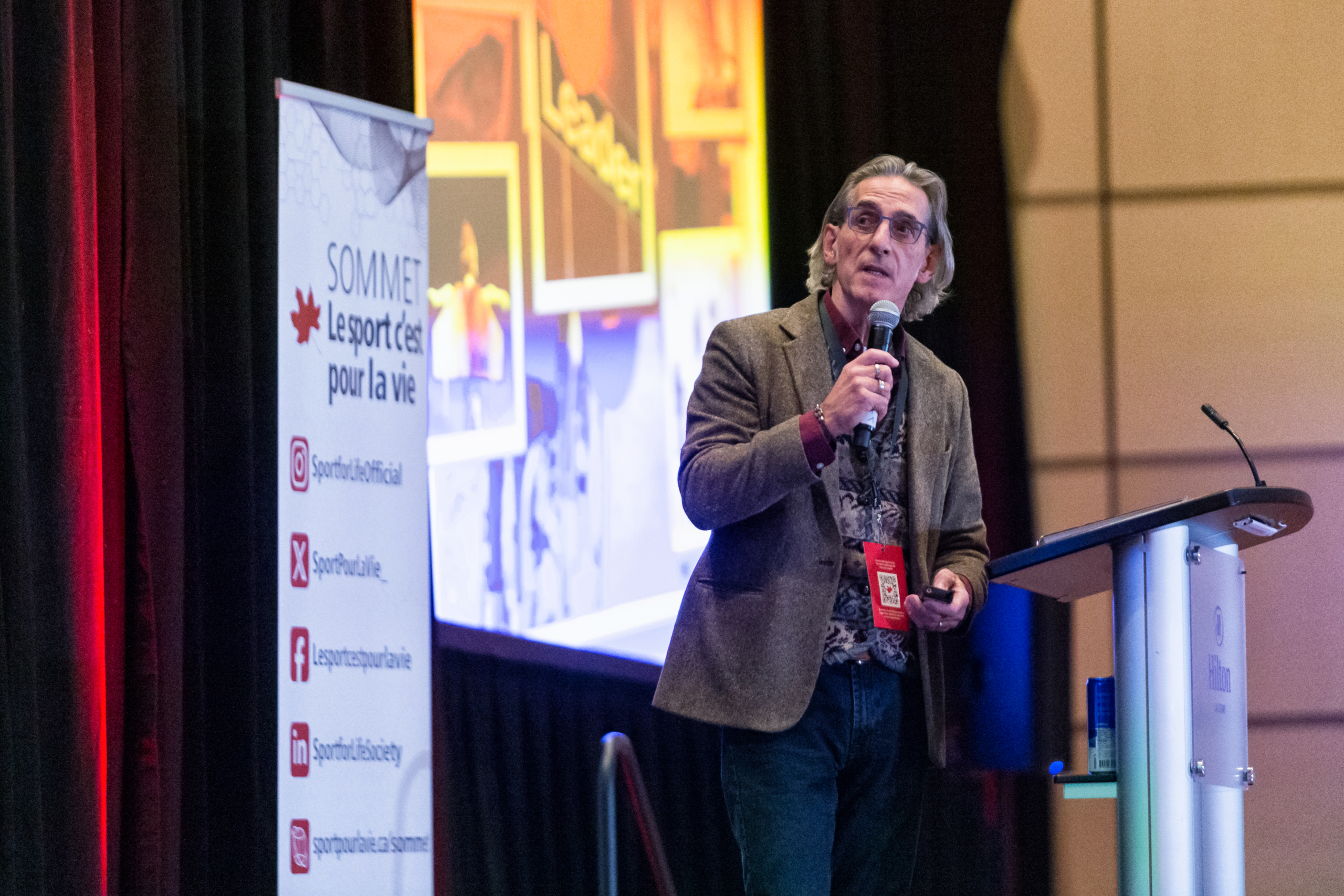
Joe Doiron
Practical Applications and Community Impact
Beyond the main keynotes, the Summit offered 42 specialized sessions covering topics such as competition restructuring, Physical Literacy for Communities, parasport development, and strategies for engaging equity-deserving groups.
Luca Demontis, Director of Programs at Canadian Blind Hockey, introduced attendees to the parasport of blind hockey and the organization’s efforts to make it accessible across Canada.
“More than 70% of children with sight loss do not participate in sport or recreation because they feel left out,” Demontis noted. “So we want to get these kids off the bench and into the game.”
His organization has hosted over 200 “Try Blind Hockey” events across nine provinces and impacted over 2,000 participants who are blind or partially sighted. “By creating inclusive sport and recreation activities, we feel that Canadians who are blind or partially sighted have the opportunity to increase their confidence, social skills, and independence just by playing a game that we all love,” Demontis explained.
Other presenters shared innovative approaches to making sport more accessible, including Vicente Ferrer’s “DiverFit” program that uses games and fun activities to keep children engaged in physical education, and David Lizotte’s multisport summer school program in Drummondville, Quebec, which provides children with exposure to multiple sports under the guidance of specialized coaches.
The Summit also featured presentations on community-based initiatives like the “I Love To…” program in Thunder Bay and the innovative work of Champions for Life in school settings. These case studies provided attendees with practical examples of how to implement inclusive programming that prioritizes joy and participation in various community contexts.
The Value of Partnerships and Collaboration
The Sport for Life Summit was made possible through collaboration with key partners across Canada’s sport ecosystem.
Thank you to Réseau Accèss Participation for organizing and ensuring full bilingual accessibility, and to the Sport Information Resource Centre (SIRC) team for hosting speed networking and supporting Post-Secondary Poster Sessions.
We appreciate ParticipACTION for advancing the Active Canada Action Plan, including hosting a session to further its progress, and the Future of Sport Commission for conducting consultations to improve Canada’s sport system.
Our gratitude extends to our sponsors—the Government of Canada, OneBADGE Sport, Push Play, Ville de Gatineau, Outauais Tourism, and Sport’aide—and to our exhibitors: Anti-Racism in Sport, Coaching Association of Canada, ISILive, MLSE, ParticipACTION, Réseau Accès
Participation, Richmond Sport Hosting, Sport Dispute Resolution Centre, Sport Law, SIRC, and Tibu Africa.
Special thanks to Baseball Canada, Parasports Quebec, Table Tennis North, Table Tennis Canada, and Experio for making this 20th-anniversary Summit a success.
Looking to the Future of Sport
The Summit concluded with a dynamic panel discussion on “Envisioning the Sport of Tomorrow,” featuring international perspectives from Ali Kada (Fédération française des clubs omnisports), Mohamed Amine Zariat (TIBU Africa), Mariane Parent (Réseau Accès Participation), and Richard Way (Sport for Life).
The panel explored how sport can contribute to achieving the United Nations’ Sustainable Development Goals and create positive social change beyond competitive outcomes.
“We must put people before performance, we always must put people ahead of performance, even though we strive for Olympic excellence, world excellence,” Way emphasized during the panel. “Sport is not the end. Sport is not the outcome. It is through sport that we create a healthy civil society.”
Mariane Parent highlighted the importance of breaking down silos in sport development: “I don’t know for you, but even until recently, I’ve heard people in organizations saying ‘I need to stay in my sandbox and others need to stay in theirs, so we know who does what.’ But I invite you to remove this concept of the sandbox and create one big playground together. If we continue to work in silos, we’re putting people in boxes according to where they are or what sport they’ll practice.”
Ali Kada shared insights from France’s experience hosting the 2024 Olympics, particularly highlighting the “Marathon for All” event that allowed 20,000 people to participate during the Games. “What really struck me was that this event created the most powerful shared experience, and for me, that should be the goal of a successful partnership,” Kada explained. “In France, we say, ‘Alone we go faster, together we go farther.'”
Zariat shared the impressive impact of TIBU Africa, which has reached over 155,000 children across 350 schools in Morocco. “Eighty-eight percent now have good marks in school, zero drop out. So they continue school from primary to middle and high schools,” he reported. “And it creates jobs because we need a teacher for each school.”
Looking Ahead: Carrying Joy Forward
As the Summit drew to a close, participants left with new connections, resources, and inspiration for making sport more inclusive and joyful in their communities. The attendance of 400 delegates from across Canada and worldwide signalled a strong commitment to the Sport for Life movement.
“I look forward to hearing the stories of your great successes in impacting our society, whether in Canada or around the world, with improving the quality of sport and developing physical literacy,” Way told attendees at the closing ceremony.
The theme of “Joy for Everyone” resonated throughout the event, serving as both a celebration of progress made and a call to action for the work still to be done. Participants departed with practical tools, inspiring examples, and a renewed commitment to creating sport environments where joy is not just an occasional byproduct but a foundational element of the experience.

